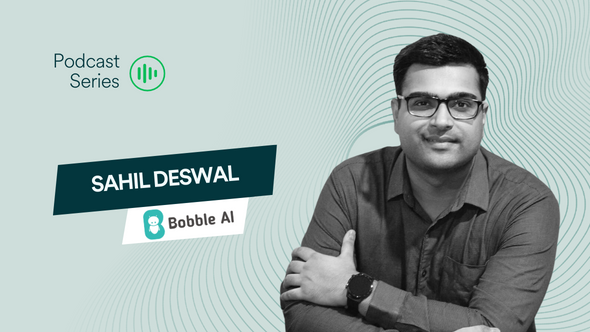If you are interested in exploring a career in growth product management, you’ve come to the right place. With product-led companies already employing traditional Product Managers who directly influence revenue by creating a better user experience, the growth product management function might soon become an all-encompassing one. In this episode, we will be talking about growth product marketing as a function and as a career choice, the core competencies required, the roles and responsibilities, along with use cases and examples from a leading growth and product expert, Ameya Sawant. Ameya handles Product, Growth, and Special Projects at ONE Championship, Asia’s fastest-growing global sports media property based out of Singapore.
Without further ado, here’s a look at how the discussion shaped up:
1. How do you define growth product management and how is it different from traditional product management?
Product managers own a specific set of product functionality. Based on the scale and the nature of the organization, the responsibilities vary wildly. Growth PMs are heavily focused on metrics. We mostly like graphs that go quickly to the right and upwards. A growth product managers’ traditional job description has them being obsessed with driving additional value from the existing assets. Sometimes it is incremental and sometimes it is a step-change.
Growth work happens in two distinct types – In near-term tactics & in long-term strategic moves. Based on the kind of product and the stage of its lifecycle you work on, either of them could take higher priority at different points in time. There is a lesser upside working on the long-term product upgrade that has high but an untested potential of delighting your users when fires are burning everywhere in the current product. In my opinion, the major difference between Growth work and traditional Product Management is that you have the freedom to make decisions that are not optimal for the long term.
2. What skills should anyone breaking into growth product management possess?
- Understanding, analyzing, and leveraging data in the form of actionable insights.
- What your product currently is and what it wants to be in the future
- Focus on who your customers are and why they do what they do
- Awareness of the available avenues to take things to market
- Communication and the ability to influence and execute
These specific skills are on a sliding scale and it takes purposeful thought and relentless improvement to get better at most of these competencies.
3. How important of an asset do you think creativity is?
Creativity is definitely one of the biggest differentiators between a great growth product manager and a by-the-book one. Product development of most kinds is supercharged by creativity. “Creation” in general requires creativity.
Let’s start with the most used example in growth circles – Facebook found that people stuck through the best when new users added 7 friends in 10 days. Once users understood the value of adding friends on Facebook, they stuck around for much longer. Understanding the key activation threshold was crucial to their success. They could’ve very easily focused on the wrong actions as part of onboarding and failed. But here’s the thing – Discovering this golden metric to measure and choosing the right benchmark for it is almost an art. I haven’t come across a playbook for it yet.
Acquiring new customers is costlier than retaining the ones you already have. Hinge, a dating app, found an innovative way to increase retention. They noticed it was far more productive to have users focus on only a single like at a time, rather than seeing lots of likes at once. Hinge saw 4X user growth and 20% increased retention within a single year by paying attention to user behavior. It was an overall product differentiator as well. That said, I can’t confirm nor deny that this app has worked for me!
Having an active right brain is certainly an asset. But creativity happens in spurts and I tend not to depend on that spark; I lean towards the systematic.
Listen to the full episode for valuable insights, more use cases, and examples.


